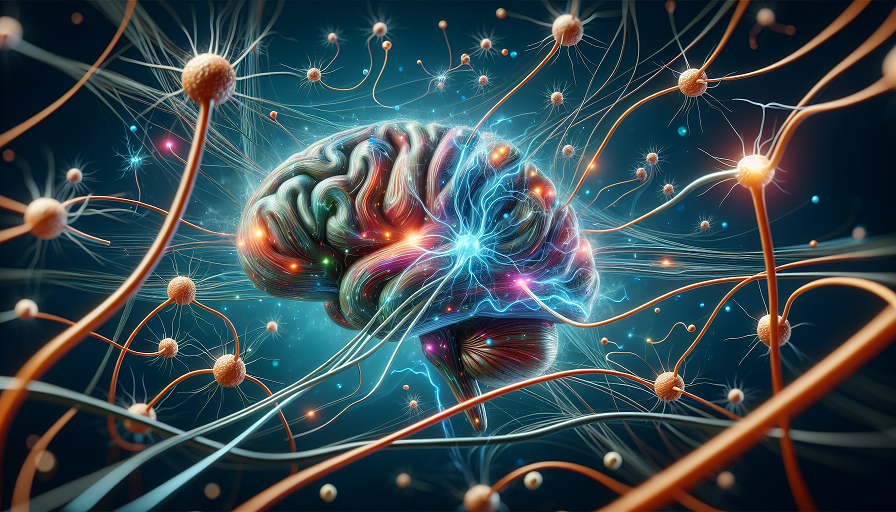
Neuroplasticity, the brain’s ability to reorganize and adapt, is one of the most fascinating aspects of human biology. This capacity for growth and change underpins learning, memory, skill acquisition, and recovery from injuries. But how can you measure something as intangible as neuroplasticity in your daily life? While direct scientific measurements often require advanced imaging technologies, there are practical ways to observe and assess the effects of neuroplasticity in your day-to-day experiences.
Contents
Understanding Neuroplasticity
Neuroplasticity is the process by which the brain forms new neural connections or strengthens existing ones in response to learning, experience, or changes in the environment. This adaptability is crucial for:
- Learning New Skills: Acquiring abilities like playing an instrument or mastering a sport.
- Adapting to Change: Adjusting to new routines, environments, or challenges.
- Recovering from Injury: Reorganizing brain functions to compensate for damaged areas.
While the physical processes of neuroplasticity occur at a microscopic level, the results manifest in tangible ways, such as improved performance, enhanced memory, and behavioral shifts.
Why Measure Neuroplasticity?
Measuring neuroplasticity in your daily life helps you track personal growth, identify areas for improvement, and maintain brain health. By understanding how your brain is changing, you can:
- Recognize progress in learning and skill development.
- Stay motivated to pursue new challenges.
- Identify cognitive or emotional barriers that need attention.
- Adopt practices that enhance neuroplasticity over time.
Whether you’re aiming to boost your memory, improve problem-solving abilities, or recover from a cognitive setback, self-assessment can provide valuable insights into your brain’s adaptability.
Signs of Neuroplasticity in Daily Life
Neuroplasticity reveals itself in various ways, many of which are observable in your everyday routines and habits. Here are some common indicators:
Learning New Skills
Successfully acquiring a new skill, whether it’s learning to cook, picking up a new language, or playing an instrument, is a clear sign of neuroplasticity. Notice how tasks that initially feel difficult become easier with practice — this is your brain forming and strengthening neural pathways.
Improved Memory
Enhanced ability to recall information, whether it’s names, dates, or facts, suggests that your brain is adapting to learning and retaining new knowledge. Memory improvements often accompany activities like studying, reading, or engaging in puzzles.
Behavioral Changes
Adopting new habits or breaking old ones demonstrates neuroplasticity in action. For example, switching from procrastination to consistent productivity or replacing a negative habit with a positive one, like exercising, reflects the brain’s ability to rewire itself.
Enhanced Problem-Solving
Tackling complex challenges more effectively, such as solving puzzles, making decisions, or navigating unfamiliar situations, indicates increased cognitive flexibility and adaptability — both hallmarks of neuroplasticity.
Emotional Growth
Improved emotional regulation, such as staying calm under stress or responding to conflict constructively, shows that your brain is adapting to manage emotions more effectively.
Faster Recovery from Setbacks
Whether recovering from a physical injury, a stressful event, or emotional distress, quicker recovery times signal the brain’s ability to reorganize and heal.
How to Track Neuroplasticity in Your Daily Life
While professional tools like fMRI or EEG scans are used in scientific research, you can track neuroplasticity at home using simple self-assessments and observations. Here are some practical strategies:
Keep a Learning Journal
Document your progress as you learn a new skill or take on a challenging task. Note improvements, setbacks, and insights. Over time, you’ll see patterns that reflect your brain’s ability to adapt and grow.
Test Your Memory
Regularly challenge yourself with memory exercises, such as recalling lists, solving riddles, or learning a poem by heart. Track how quickly and accurately you can perform these tasks over time.
Monitor Habit Changes
If you’re trying to form a new habit, such as exercising regularly or reducing screen time, track your adherence and consistency. Success in adopting or breaking habits reflects changes in your brain’s wiring.
Engage in Cognitive Assessments
Use brain-training apps or cognitive assessment tools to measure improvements in areas like attention, memory, and problem-solving. Many of these apps provide progress reports that show how your cognitive abilities evolve over time.
Reflect on Emotional Responses
Pay attention to how you handle stress, conflict, or disappointment. Improved emotional regulation and resilience indicate that your brain’s neural networks are adapting to support better emotional well-being.
Record Physical Improvements
Physical skills, such as mastering a yoga pose or improving your running time, also reflect neuroplasticity. These achievements highlight your brain’s ability to refine motor pathways and coordinate complex movements.
Activities That Enhance Neuroplasticity
To maximize your brain’s adaptability and support neuroplasticity, engage in activities that challenge and stimulate your mind. Here are some proven strategies:
Learn Something New
Take up a hobby, learn a language, or enroll in a course to stimulate neural growth. The process of acquiring new knowledge and skills strengthens brain connections.
Exercise Regularly
Physical activity boosts the production of brain-derived neurotrophic factor (BDNF), a protein that promotes neuroplasticity. Activities like running, swimming, or dancing are especially beneficial.
Practice Mindfulness
Meditation and mindfulness exercises enhance focus, reduce stress, and improve connectivity in brain regions associated with attention and emotional regulation.
Solve Puzzles
Engage in puzzles, crosswords, Sudoku, or brain-training games to challenge your cognitive abilities and encourage neural growth.
Explore New Environments
Traveling, trying new foods, or meeting new people exposes your brain to novel experiences, fostering creativity and adaptability.
Measuring Neuroplasticity in Everyday Life
Neuroplasticity is not an abstract concept; it is a tangible process that influences every aspect of your life. By observing your learning, memory, habits, and emotional responses, you can measure the effects of neuroplasticity and track your brain’s adaptability over time. Whether you’re mastering a new skill, improving your mental agility, or building emotional resilience, the signs of neuroplasticity are all around you.
With intentional practices like journaling, cognitive challenges, and mindfulness, you can actively support your brain’s growth and flexibility. Remember, the brain’s capacity for change is limitless — all it takes is consistent effort and a willingness to embrace new experiences. So start today, and witness the incredible potential of your adaptable brain.

